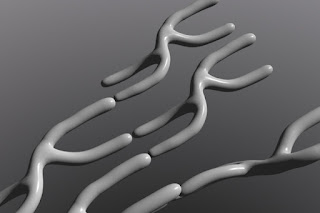

Here's an updated version of the aggregation strategy. After splicing the hot dogs together, they can be aggregated in both a regular pattern as well as rotated any degree to introduce a new orientation of the same pattern.








 we've been exploring the implications of the rhizome as a system which can cluster or aggregate at multiple scales.
we've been exploring the implications of the rhizome as a system which can cluster or aggregate at multiple scales.



